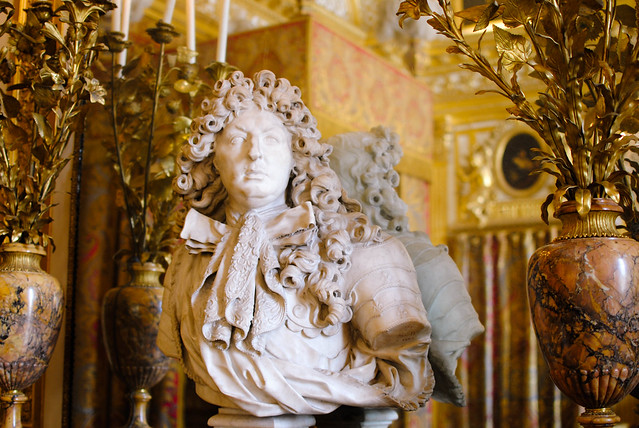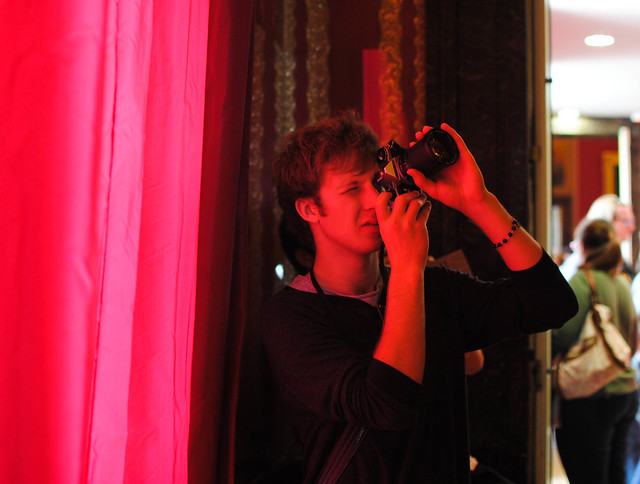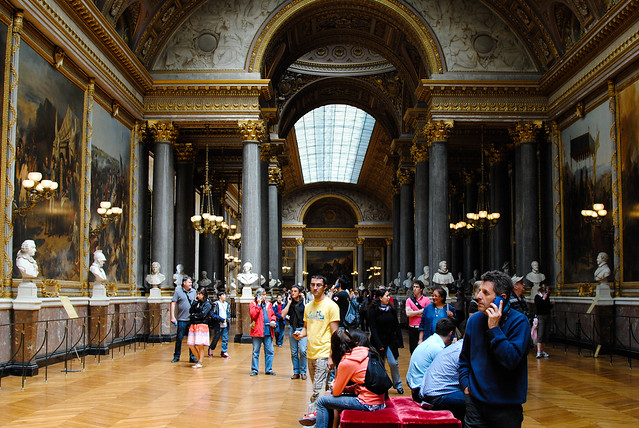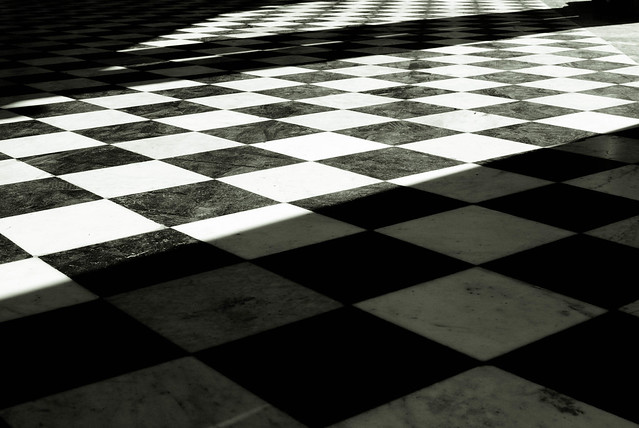This is somewhat belated but it needs to be recorded so you have my apologies. Last weekend, to celebrate the last weekend we would all be together (as of today I am the last UNH student in France), Kendra, Sean, Amy, Kevin and I took a trip to Versailles.
We had decided to do it the weekend before but with a round-trip ticket that only costs 18 EUR it was well worth it despite the fact that we had to take a train that left at quarter till 6 and didn't arrive at Paris Bercy until 9AM. In Paris we bought tickets for the RER which took us directly to Versailles. With some walking and puzzling out of the metro maps, we arrived at the Palace by about 11AM. Once there we found out that as students studying in the European Union (with visas and student cards to prove it) we were able to get into the Palace and the Gardens with only paying 8 EUR. This turned out to be an enormous deal as without this handy student discount we would have ended up paying around 25 EUR.
 |
| In the chamber of the king which seemed to be made entirely out of gold. |
We waited in a very long but fast-moving line to get into the Palace and once inside the sheer excess and riches of Versailles was before our eyes. The Palace is less famous as a building and more as the symbol that it represented: absolute monarchy. Built by Louis XIV, it was the political capital of France from 1682 (when Louis XIV moved from Paris) to 1789 when the French Revolution broke out. The reasons for building Versailles were largely based off of Louis XIV's desire for more power. By shifting the center of government and requiring nobles to spend a certain amount of time at Versailles he effectively prohibited them from establishing regional control.
 |
| The hall of mirrors. |
At the time of the visit I was mostly struck by the sheer wealth of the Palace, but in re-visiting it I'm reminded of
Apollo's Angels (a book by Jennifer Homans that masterfully tells the history of ballet) and how ballet began with Louis XIV, in Versailles as court etiquette. Ballet's five positions are in fact derived from the movements courtiers could make without turning their back on the king.
Symbolically and historically I find Versailles to be very fascinating but the sheer wealth that wafts from the Palace isn't my cup of tea. It's a sight to behold for sure but I prefer things much more quieter, intimate and with a personality that isn't derived solely from wealth and status. That said Versailles was very cool to see but not somewhere I'd want to live and certainly not my favorite place visited in France (a question I also have no answer to).
 |
| Kevin taking a photo. |
The Palace itself had an exhibit of various thrones of kings, courtiers, ambassadors from all around the world. The exhibit itself took time to explain the differences between "authority" and "power". While many (myself included) might think of these as being one in the same, there are notable differences.. Authority, for example, is traditionally shown seated while power is shown standing. The physical manifestation of authority is therefore that of a throne whereas power is shown through a crown and a sovereign should ideally have both objects and project both authority and power.
Versailles is, of course, more than just the palace. The gardens and their many fountains are an equal treat. The French garden style, it must be noted, is very different from the gardens I know best. The entire point of French Gardens is to impose order over nature and because of it they seem to be mostly made up of hedges with flowers growing in between them to create patterns. While there were flowers growing the main attraction of the gardens at this time of the year seemed to be the fountains which at certain times during the day went off in intricate patterns.
 |
The Gallery of Battles where, among works depicting Jeanne d'Arc and the
siege of Orleans we also saw one with George Washington. |
We wandered the gardens for more than an hour, partly because there was so much to see and partly because we were waiting for the water shows to begin. When they did we saw a few in action and then headed for the Grand Trianon, the retreat of the Royal Family. Given that the French monarchs saw fit to construct massive castles which functioned as hunting lodges it should not be surprising that they had to build a retreat from their massive castle.
The Grand Trianon itself sits right next to the Petit Trianon which is best known as the favored house of Marie Antoinette. We were unfortunately a bit pressed with time and didn't get the opportunity to visit the Petit Trianon and also the village Marie Antoinette had constructed but were able to get a glimpse of what "low-key" meant for French royalty.
 |
| The floor of the Grand Trianon. |
From the Trianon we hiked our way back to the Palace, then to the metro stop and finally to the train station where we were able to grab sandwiches for our ride back and also catch the train with time to spare.






No comments:
Post a Comment